By Dylan Clay
Most if not all commercial pork rubs contain a mixture of the same ingredients.
In most cases, it’s a:
Rather than spending money on these rubs, make your own for a fourth of the cost.

Most if not all pork butt rubs will include a combination of the following ingredients:
You get the gist though – it all depends on what you’re after in the final product.
Typically a sweet rub is more-so the goal with pork as sweet flavors tends to pair really well with pork’s intrinsic flavor.
This is in a similar vein to brisket where savory flavors go better with beef.

There are a few different options with pepper, especially when making rubs. In most cases though, people in the barbecue world will use one of three options:
The main thing to understand here with pepper is the “mesh” size as it has the most impact on how pungent the pepper is.
For all intents and purposes, most people are using black pepper.
With that said, I’d suggest experimenting with something like purple peppercorns or white peppercorns.
After following enough barbecue rub guides or recipes online, you’ll start to notice that the person uses the word “mesh” when describing their pepper.

The word mesh simply refers to the coarseness of the ground pepper.
Various mesh sizes of pepper:
These various mesh sizes are important when it comes to creating rubs – like a pork rub.
These mesh sizes have a big impact on how “pungent” the pepper is. This is the reason you CANNOT substitute equal amounts of table ground pepper for freshly cracked peppercorns.
The flavor of pepper comes from compounds like:
Freshly cracked peppercorn has less surface area meaning the above compounds have less of a chance to evaporate.
Conversely, 16 mesh and table ground black pepper have more surface area and a higher rate of evaporation.
Put simply, freshly cracked peppercorns are more pungent than 16 mesh and 16 mesh is more pungent than table ground.
I find that freshly cracked peppercorns work well with beef and it has a nice pop that’s pleasurable. For something like pork though, table ground black pepper is my preference.
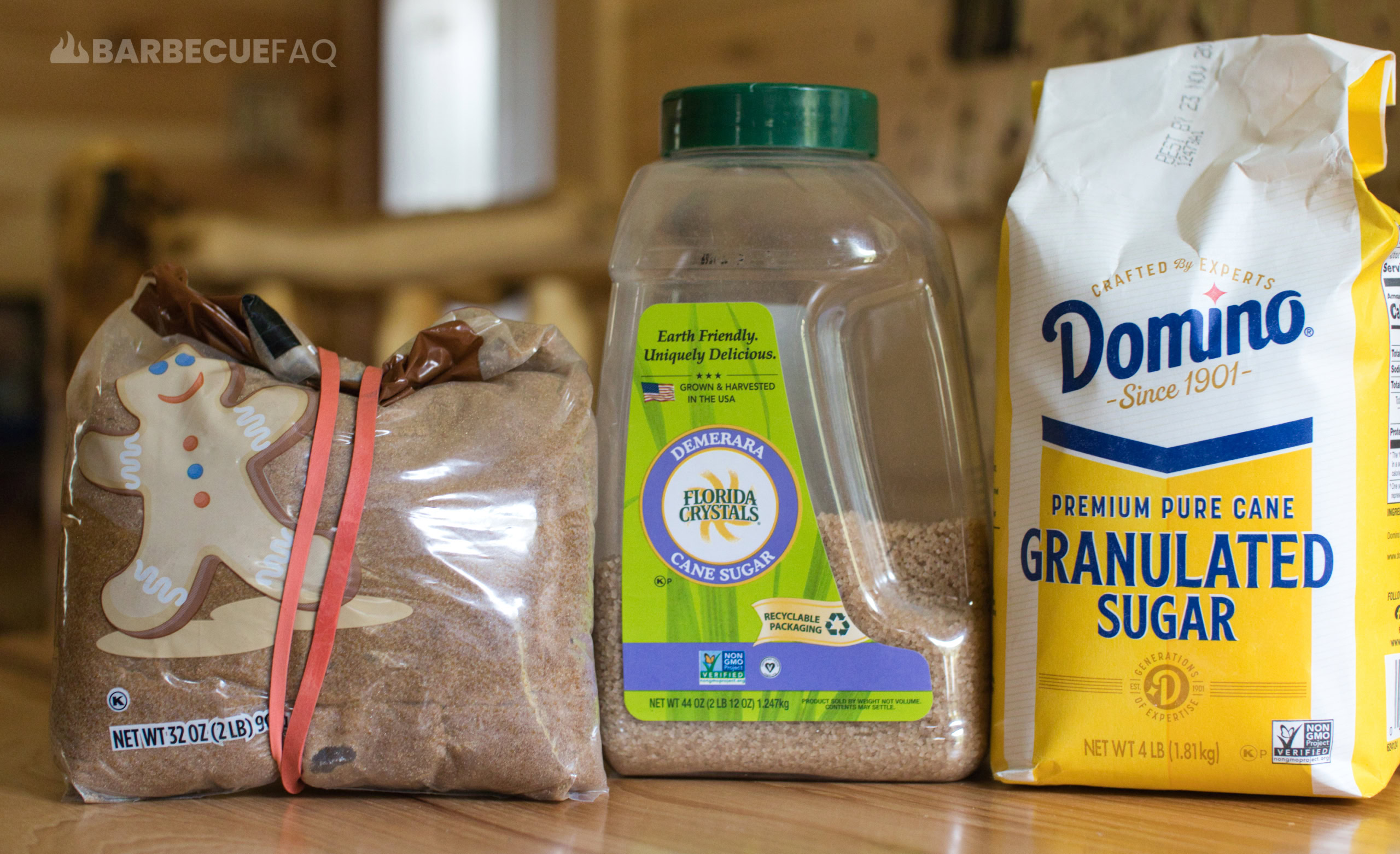
I’ve tested tons of different types of sugars with pork – namely turbinado sugar, dark brown sugar, white sugar, maple sugar, honey granules, etc.
What I find what I like best is a combination of white sugar and brown sugar with pulled pork.
I do quite like using Turbinado sugar in rubs though – I find it mixes well in the shaker and tastes wonderful.
However, I feel like most folks don’t have turbinado sugar on hand – rather, most will have dark brown sugar and white sugar in their pantry. Dark brown sugar is common in baking and white sugar has a variety of use cases.
I especially like turbinado sugar with pork ribs because the meat is oriented horizontally and the sugar won’t fall off – with pork butt it has a tendency to fall off – almost requiring a binder like mustard to keep it on.
To sum this section up, I use equal parts white and brown sugar because:
Brown sugar features far more molasses and tastes better (in my opinion) than white sugar. However, white sugar will create a better bark.
The above are my opinions though after testing tons of different sugars in rubs. You’d have to test for yourself to see what you think works best.
Be mindful with sugar too as going “hot and fast” or 325F+ will result in you burning the sugar (especially white sugar); Burned sugar tastes bitter and will ruin your bark, which is the best part of pulled pork.
Most if not all recipes for barbecue will include salt in the rub. Salt is used because it helps to enhance the natural “porky” flavor of the meat.
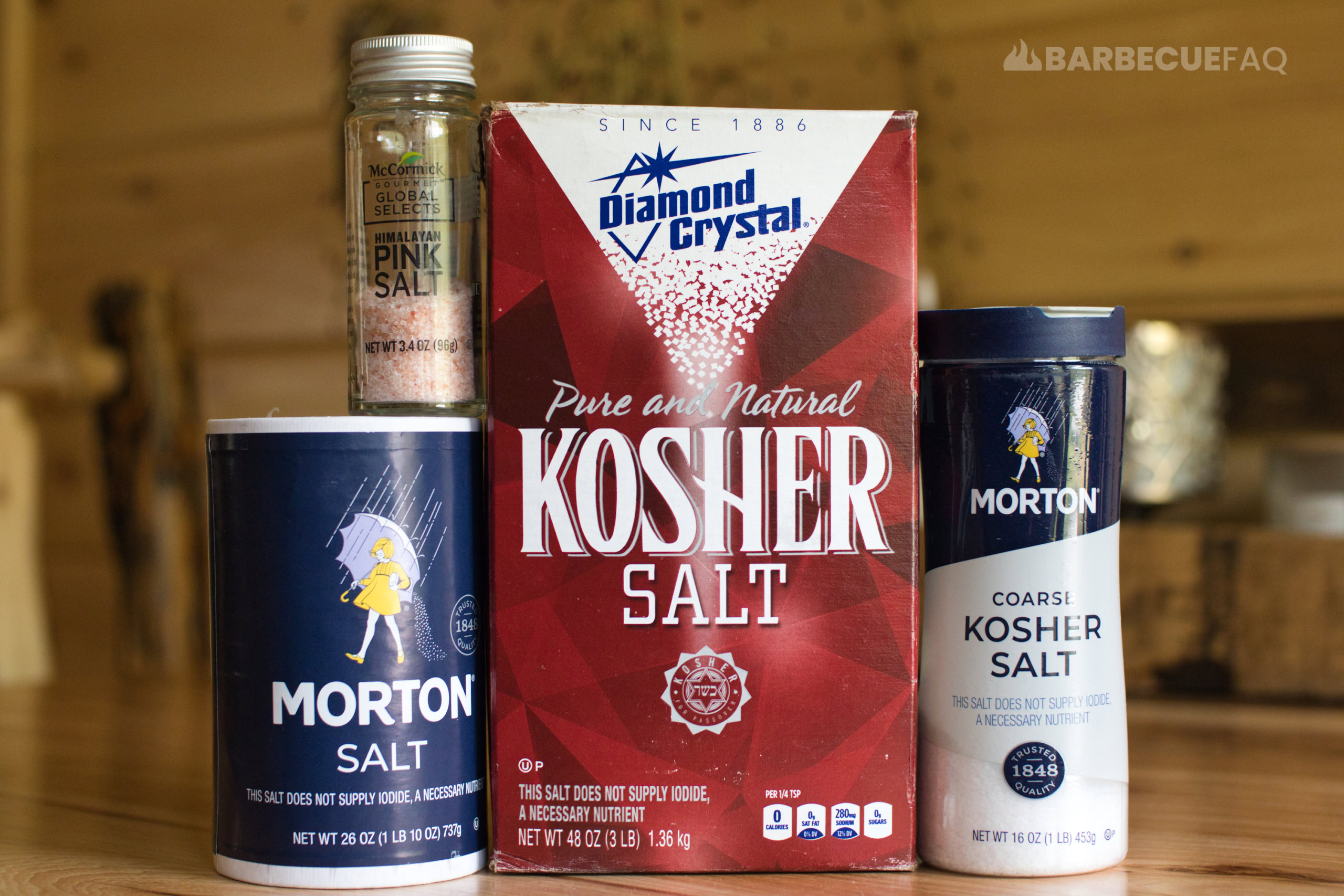
The main things to talk about in terms of salt are:
To start, we’ll mention the brands as it will naturally segway into why you shouldn’t use table salt in a rub.
The two most popular brands of kosher salt that are used are Morton’s and Diamond Crystal kosher salt.
Most culinary professionals will tell you to use Diamond Crystal because it only contains salt.
Here’s Diamond Crystal Kosher salt:

Here’s Morton’s Kosher salt:

The reason culinary professionals don’t like Morton’s is because it features an anti-caking agent (yellow prussiate of soda, or sodium ferrocyanide), which some believe tastes bitter.
Where-as People who don’t taste a difference (like Me) will use Morton’s because it’s much cheaper.
Personally when it comes to using salt, I prefer to salt the meat first and then apply the dry rub ingredients.
This lets me have more control over the salt – especially if I’m using Morton’s, because it’s denser than Diamond Crystal.
To illustrate, here’s the densities of both:
If you prefer to mix your salt into the dry rub ingredients, I’d suggest using Diamond Crystal. The granule properties allow for it to be mixed better where-as Morton’s has a tendency to dissociate from other ingredients.
For this article I actually used Diamond Crystal because that’s what I had on hand.
Note: If you’re using a recipe that specifies kosher salt, check for the brand name.
If it calls for Morton’s and you have Diamond Crystal, use double the amount.
Inversely, if the recipe uses Diamond crystal and you have Morton’s, use half the amount.
If you’re interested in seeing a more in-depth analysis of these brands of kosher salt, be sure to check out my article here.
The above stands to reason, why not just use table salt.
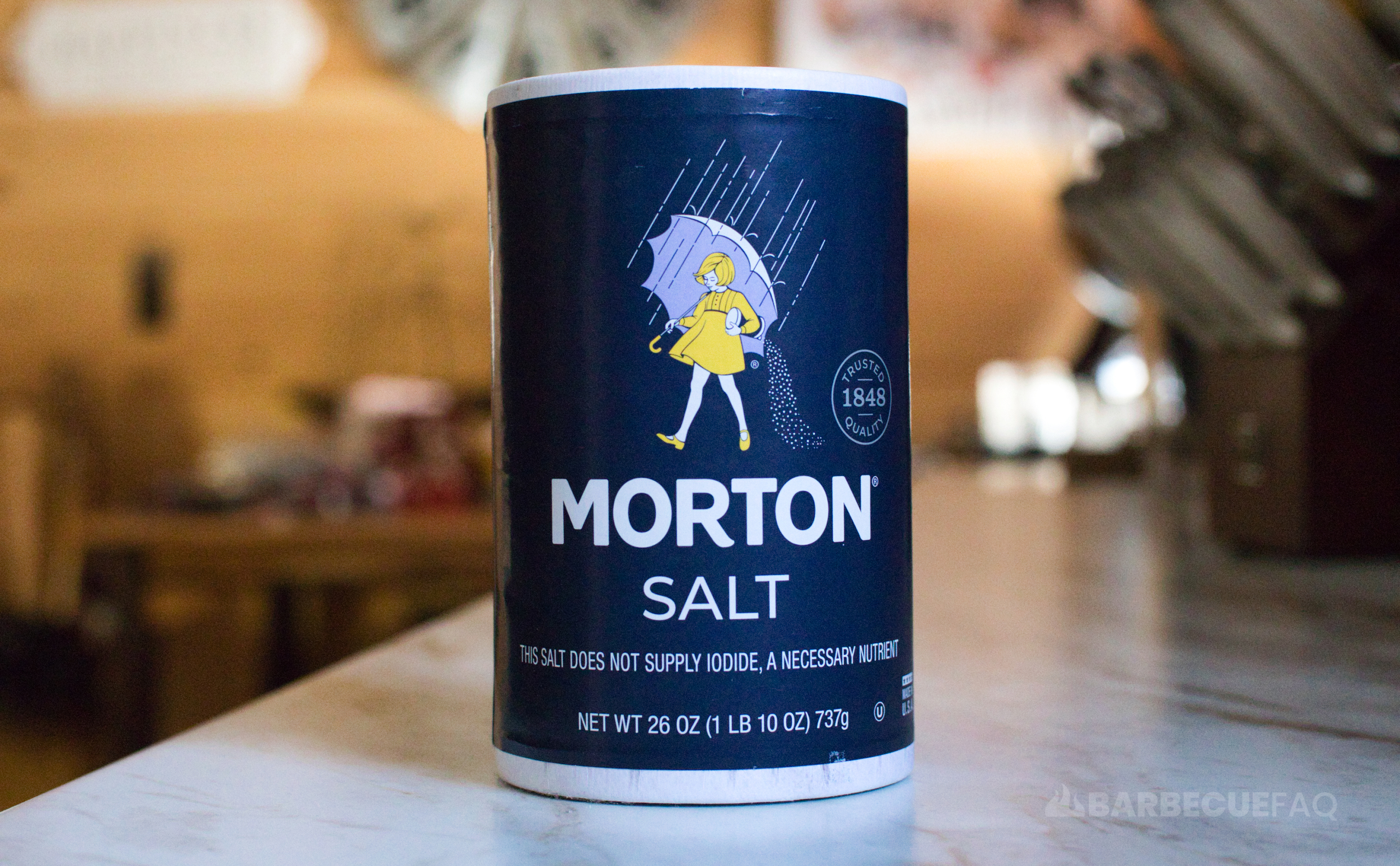
The reason I’d suggest not using table salt is because it’s even more dense than Morton’s Kosher Salt.
Here’s a density comparison:
Table salt’s granule size is also much smaller. The coarse grains of kosher salt allow you to salt the meat in such a way that it improves the flavor of the food.
Where-as table salt simply makes food taste salty.
There’s also the concept of iodized vs non-iodized salt; Most people find that iodized salt leaves a better after-taste.
So if you used table salt you’d get salt that’s more dense, tastes saltier, and may or may not leave a bitter aftertaste.
Typically with pulled pork, the “heat” isn’t applied until later, but some people do opt to use spicy ingredients in their rubs.
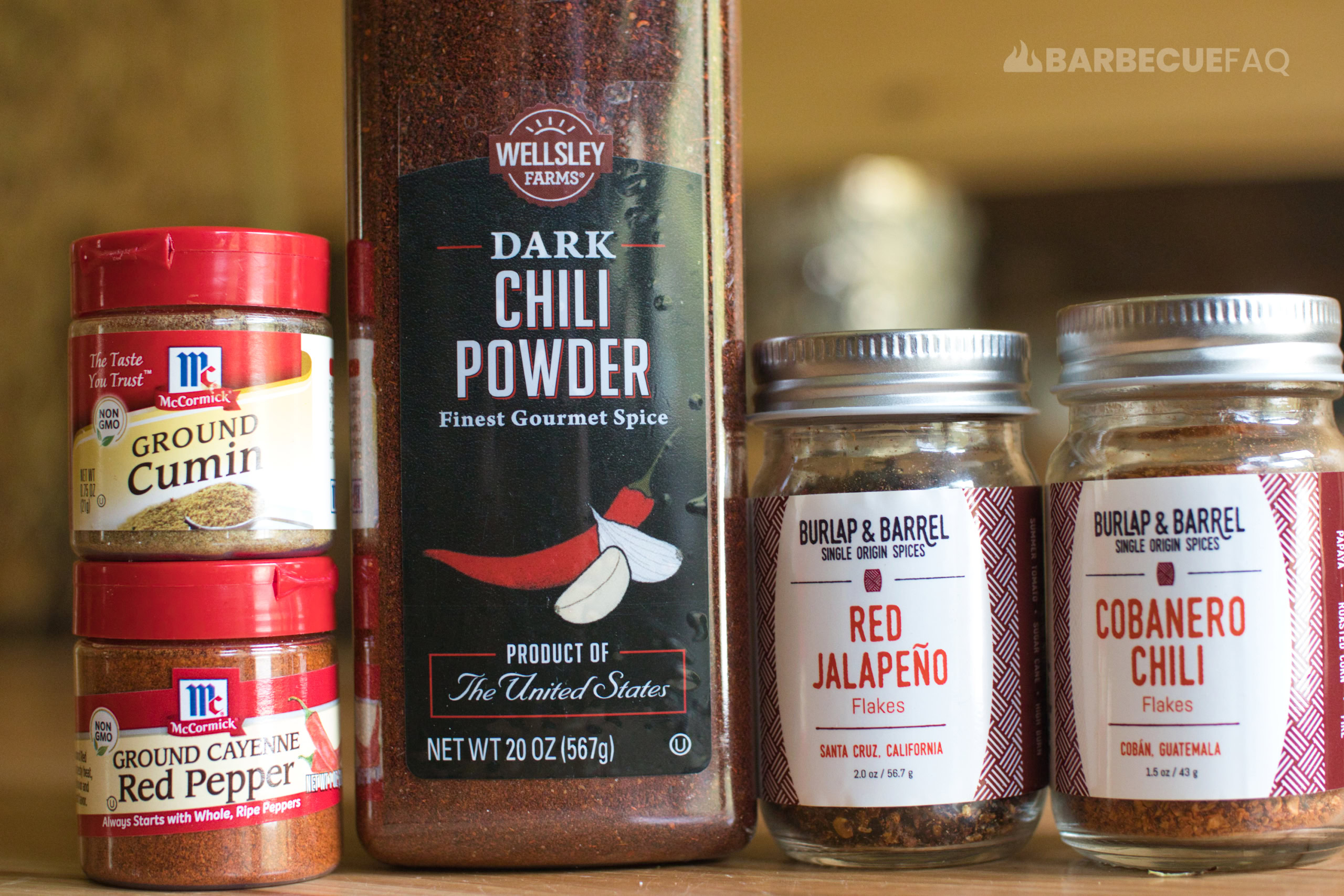
The most common are:
Any of the above will suffice, however, you really have to know your audience. If your friends and family like heat, use some form of heat in the rub.
However, if a single person doesn’t like heat, they’re up creek without a pulled pork sandwich – so-to-speak.
This is the main reason heat isn’t applied until later with pulled pork, most people will create a “table sauce” or “finishing sauce.” More often than not, this finishing sauce is simply a combination of two ingredients: hot sauce and vinegar or chilies/vinegar.
Personally, I like to take my rub ingredients and add it to the vinegar with some form of heat (usually Red pepper flakes, jalapeno flakes, or Frank’s Red Hot/Cayenne).
Most commercially available barbecue rubs that are for pork will include paprika.
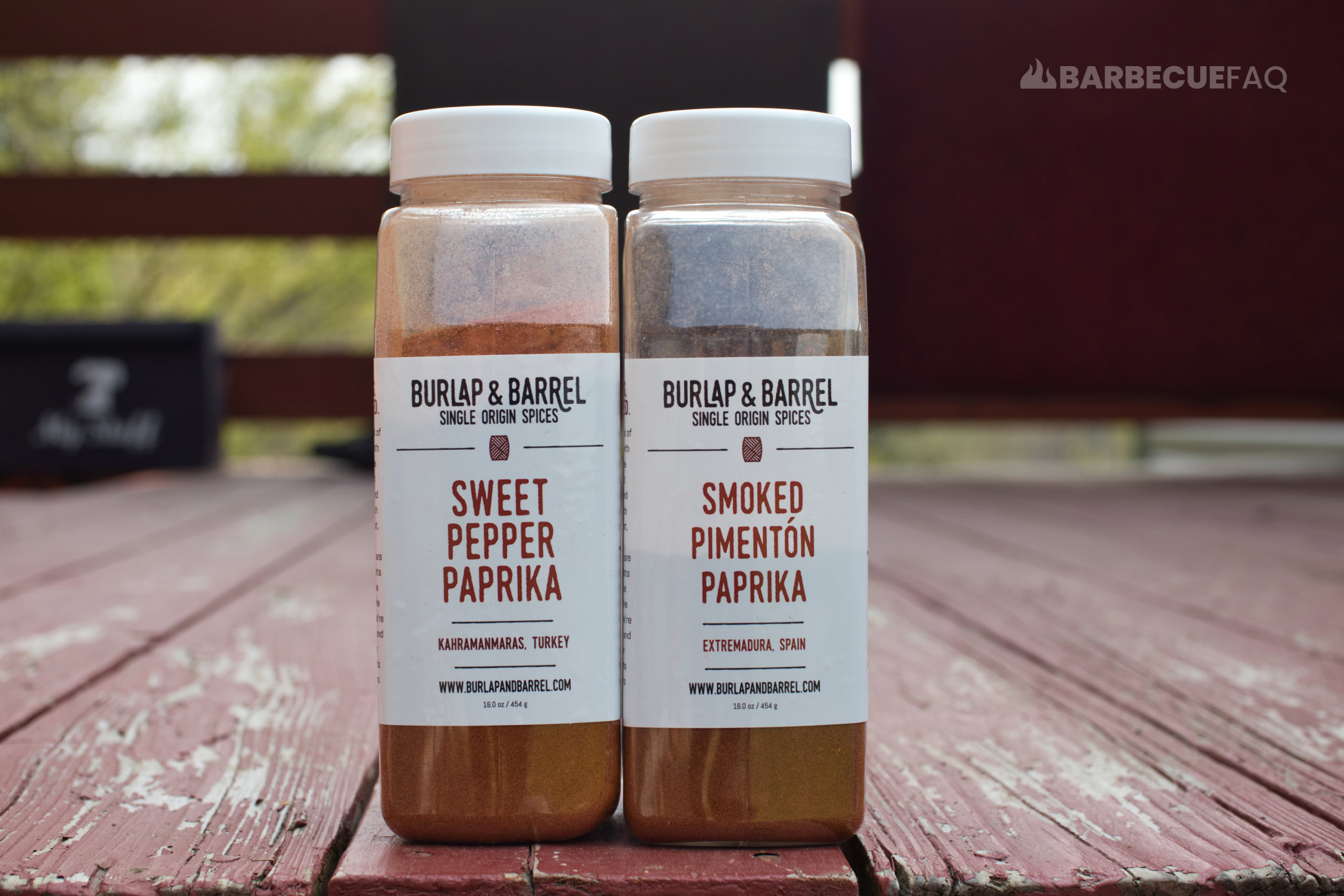
In most cases though, the paprika these folks are using is very low grade – to the point where it imparts no flavor and is solely used for color.
For this reason, I do not use the cheap store-brand paprika you’ll inevitably find in your grocery store; It’s great for deviled eggs, but useless for meat.
If your goal is just to use it for color – use a wood like cherry to impart that elusive red/mahogany color rather than a cheap spice.
For paprika, you’ll want to find varities that list their country of origin as Spain, Turkey, or Hungary – as these will actually have flavor.
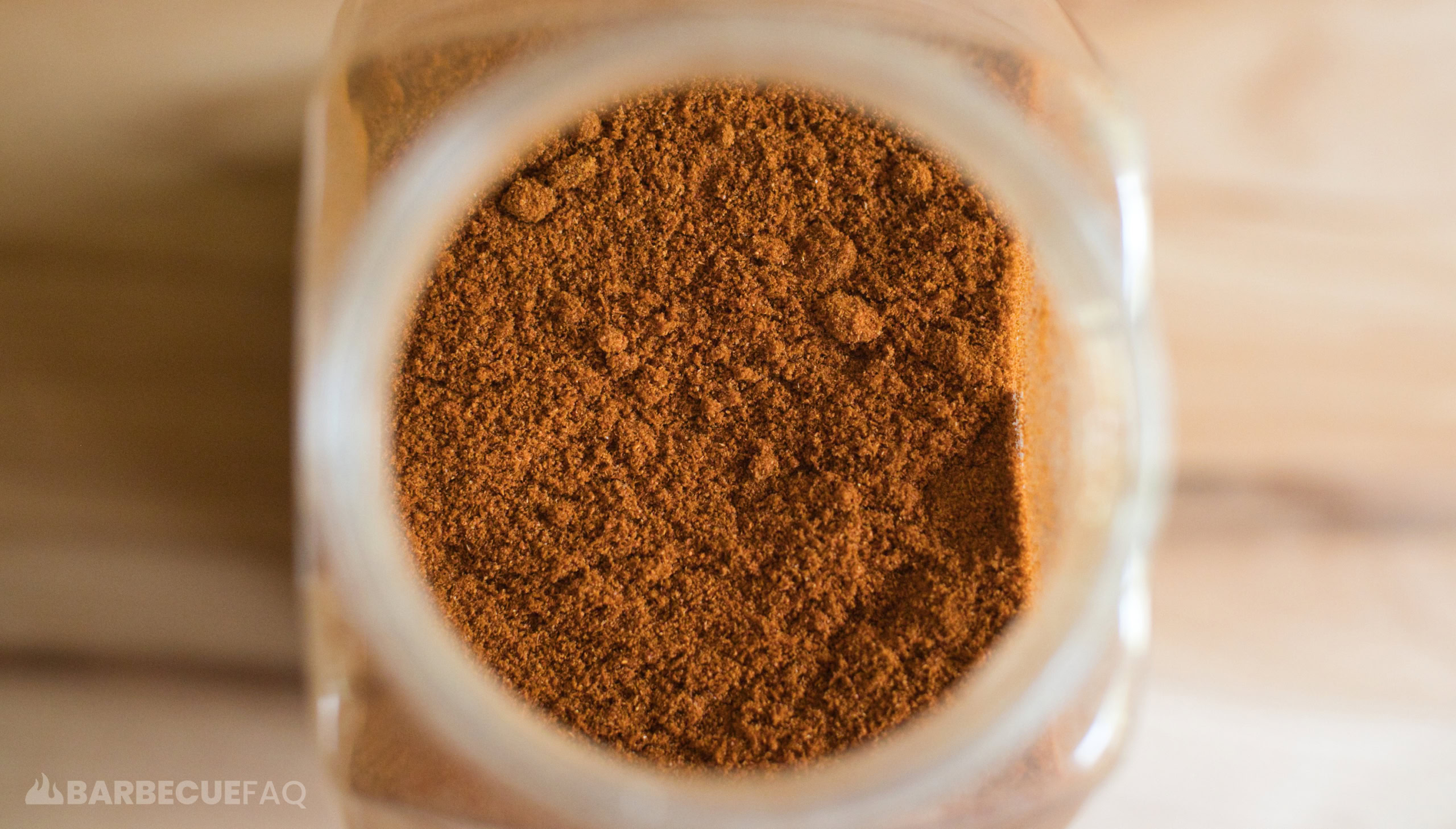
For all my recipes I source ingredients like Paprika from Burlap and Barrel – they have both a smoked paprika and sweet paprika.
Of the two I will typically use their sweet paprika will pulled pork.
If you don’t own a smoker then smoked paprika can add a wonderful “smoky” flavor that you’d otherwise lack.
Lastly, be mindful of the paprika you’re using. Paprika can also be Hot and/or spicy too.

Simple but works well. I added to this like 1/4 tsp of cayenne for a pop of heat and that worked great.
Happy to help Jordan!